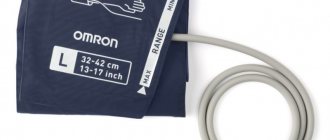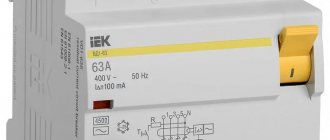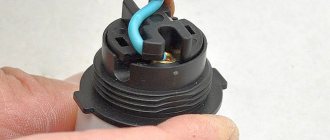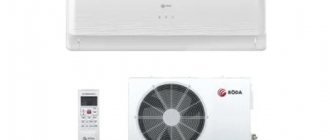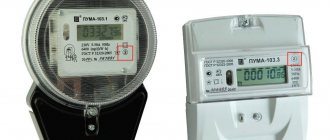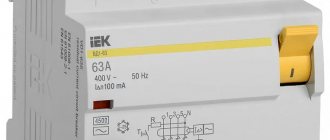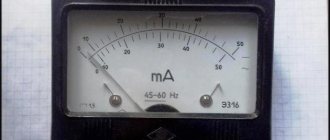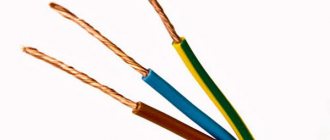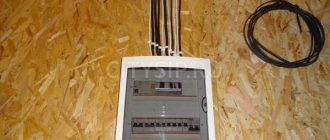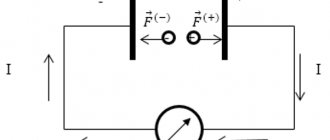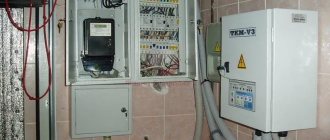Author:
Sergey Ognev. This email address is being protected from spambots. You must have JavaScript enabled to view it.
"Design engineer at SMP Pozhavtomatika LLC"
Winner of the competition “Best Project 2019″ (AutoCAD)
Completed courses:
Using AutoCAD 100% 2.0
Blocks and fields in AutoCAD
Acceleration and automation in AutoCAD
Good afternoon, colleagues! My name is Sergey, I am a design engineer and a bit of an estimator. My main area of activity is fire protection systems.
Today we will analyze the work that won the competition for the best project in AutoCAD for 2022. In this work, fields are widely used to build connections between parent and child objects, counting the lengths of cables and cable-supporting products.
Working documentation in PDF format is available here.
This concept is based on the desire to reduce labor intensity and the number of errors when making changes to a drawing, as well as to automate the calculation of specifications. Some of the solutions used were adopted after receiving comments from installation organizations, something had to be implemented to simplify the preparation of estimate calculations, and all this is far from complete: new challenges constantly arise and shortcomings in the work are discovered that need to be eliminated.
Inserting from a list of equipment
- Click Schematic tab Insert Components panel Insert Component drop-down Equipment List. find
- Select the table file and click Open.
- If multiple sheets/tables are found in the data file, select the table to edit.
- Click OK.
- In the Options dialog box, determine whether the default settings will be used, or select a file with previously saved settings.
- Default Settings: View/Edit Settings options become available to change the default settings. Change the settings or click OK to continue pasting using the default settings.
- Read parameters: select a file (*.wde) to read parameters and click the “Open” button.
- (Optional) Click in the spreadsheet/table columns to determine the order of the data in the selected equipment list file. In the Equipment List Spreadsheet Options dialog box, assign column numbers to data categories (for example, Manufacturer, Catalog Number, and Functional Group).
- (Optional) Click Save Settings to save the settings to a file for later use.
- In the Options dialog box, click OK.
- In the Schematic Hardware (or Panel Hardware) list, view components by sorting or checking by catalog.
- Select the component to insert into the drawing.
- Make changes to the scale, orientation, or rotation angle of a component.
- Select a method for inserting a component into a drawing:
- Insert: Finds and inserts a schematic component (or panel) for the selected component in the equipment list.
- Specify file: Specifies the file to insert. Select an existing AutoCAD Electrical toolset component list file for the equipment list, or retrieve a new copy of the panel components data from the current project database.
- Convert Existing: (panel components only) inserts the data for the selected record into an existing non-AutoCAD Electrical toolset inserted block. The block is immediately converted to an AutoCAD Electrical toolset footprint.
- In the Insert dialog box, select the name of the block to insert from the list.
- Click OK.
System requirements
For 32-bit AutoCAD Electrical
- Operating system Windows 8 Enterprise, Professional, and Standard edition, Microsoft Windows XP Home or Professional (SP3 or higher), or Microsoft Windows 7 Enterprise, Business, Ultimate or Home Premium
- Intel Pentium 4 processor or dual-core AMD Athlon processor with at least 1.6 GHz and SSE2 support for Windows XP, or Intel Pentium 4 processor or dual-core AMD Athlon processor with at least 3 GHz and SSE2 support for Windows Vista or Windows 7
- 2 GB RAM
- 11 GB of free disk space for installation (12 GB for computers without the .NET component)
- Monitor with 1280x1024 resolution and True Color support
- Browser Microsoft Internet Explorer 7.0 or higher
- Pointing device compatible with Microsoft Mouse
- To install: Internet connection or DVD drive
For 64-bit AutoCAD Electrical
- Operating system Windows 8 Enterprise, Professional, or Standard edition, Microsoft Windows XP x64 Edition (SP2 or higher), or Windows 7 Enterprise, Business, Ultimate, or Home Premium edition
- Athlon 64 or AMD Opteron processor with SSE2 technology, Intel Xeon with support for Intel EM64T with SSE2 technology, or Pentium 4 with support for Intel EM64T with SSE2 technology
- 2 GB RAM
- 11 GB of free disk space for installation (12 GB for computers without the .NET component)
- Monitor with 1280x1024 resolution and True Color support
- Browser Microsoft Internet Explorer 7.0 or higher
- Pointing device compatible with Microsoft Mouse
- To install: Internet connection or DVD drive
Additional System Requirements for 3D Modeling
- Intel Pentium 4 or AMD Athlon processor 3 GHz or faster, or Intel or AMD dual-core processor 2 GHz or faster
- At least 4 GB of RAM
- 6 GB of free disk space (not including space required for installation)
- Video adapter with a resolution of 1280x1024 and 32-bit color depth (True Color)
- Workstation-class graphics adapter with 128 MB or higher memory, supporting Direct3D technology and Pixel Shader 3.0 or higher
Setting Terminal Types
- In the PLC Database File Editor dialog box, right-click Terminal Type 1 and select Edit Terminal from the context menu.
The Select Terminal Information dialog box appears. There are three categories for top symbols: Top Input, Top Output, and Top Terminal. The Top Input and Top Output categories consist of addressable terminals, and the Top Terminal category consists of non-addressable terminals. - In the Select Terminal Information dialog box, select Top Input.
The available terminals in that category, as well as the terminals that have been recently used, appear on the screen. All these terminals are slightly different from each other. This may be a terminal with an input wire connected, or terminals with both input and output wires connected, or terminals with no wires connected. - Select the picture "Module - Information - Input - I/O Point - Wire - Left" and then click the "OK" button.
The selected terminal is assigned to the Terminal Type field in the PLC Database File Editor dialog box. AutoCAD Electrical examines the inserted block by tracking the attributes that appeared when the block was inserted. Some of these attributes may have preset values that you can override. These values are shown in the table below the list of terminal types. - In the PLC Database File Editor dialog box, select the following seven terminals, right-click and select Edit Terminal.
Note: You can select multiple fields for editing at once by dragging the cursor across all adjacent fields or by pressing the Control key while selecting non-adjacent fields. - In the Select Terminal Information dialog box, select the Input category and explore all available terminals.
- Select the terminal "Input-I/O Point-Wire Left" and click "OK".
The selected terminal type will be assigned to all seven terminals simultaneously. - In the PLC Database File Editor dialog box, right-click the last terminal and select Edit Terminal.
- In the Select Terminal Information dialog box, select the Terminal category.
- Select the Terminal Point-Wire Right terminal and click OK.
Attributes of symbol blocks
| CODE | This attribute value provides a link between the symbol block on the circuit template drawing and the section on the circuit code sheet. The value of this attribute is matched to the value in the CODE column on the circuit code sheet for the selected template. |
| ORDER | The value of this attribute controls the order in which elements are displayed and inserted in the net. Designation blocks are processed in order, from smallest to largest. Designation blocks that are assigned the same ORDER values are linked together and processed as a group. For example, to adjust the spacing between wires of a 3-phase bus, three blocks of designations are used with common values for the CODE and ORDER attributes. The ORDER value can be an integer or a decimal number. Decimal numbers for order values make it easy to add a block of notation between two other blocks without completely reordering. |
| MISC1 | The value of this attribute contains various values, operations, and flags intended for annotation. The annotation value format is <attribute name>=<attribute value>. Operations can contain embedded expressions or AutoLISP programs. Flags are keywords that, for example, allow the connection of child and parent contacts or redefine the directions for creating multi-pole circuits. Flag codes include the following codes:
|
Design and preparation for publication
At this stage, I arrange annotations on the sheets so that they do not overlap with each other, lines and blocks, write notes on the sheets, and check that the layers are frozen correctly in the viewports. I add the “Laying method” block to the communication line and indicate the standard sizes of cable-supporting products. Publishing in PDF helps me with this. When viewing in PDF, it is much more convenient to track elements related to a specific subsystem. The drawing looks like this.
It is almost impossible to see anything in the space of the model. In paper space things are little better.
You can see much more on the PDF sheet.
After several passes of publication in PDF, the file can be sent for printing and proceed to drawing up an estimate. But that's a completely different story.
Benefits of purchasing an Autodesk Subscription:
An Autodesk subscription is the only way to guarantee receiving new versions of the software, because... the Upgrade procedure has been removed from Autodesk price lists since March 6, 2015 (more details). Therefore, by purchasing Autodesk software without a subscription, the Customer will not be able to update the version of the purchased software product in the future.
And taking into account Autodesk's intention to completely switch to a temporary licensing scheme for a number of software products, purchasing a permanent license with a subscription is now the only way to guarantee ownership of the most current perpetual version of the purchased software
One of the benefits of an Autodesk Subscription is the right to use previous versions of software, which allows you to save on hardware upgrades, as well as migrate to new versions when you need it.
An Autodesk subscription allows you to use Autodesk products outside the workplace (on business trips, on your home PC, etc.).
Customers with an Autodesk Subscription are eligible for technical support. Customer questions posed through the Subscription Center will be responded to by Autodesk technicians within 24 hours.
Subscribers are entitled to use Autodesk cloud technologies, which include 25GB of file storage and sharing per subscriber and the right to perform rendering, optimization, analysis and other complex processes in a timely manner on the power of Autodesk360.
Ribbon interface of the ACADE, 2D drawing and annotation space
Nowadays you won’t surprise anyone with a ribbon interface. The ribbon interface is designed to give you quicker access to core AutoCAD Electrical commands. The ribbon is a palette containing tools, commands, and controls designed to perform specific tasks. Tools are arranged on the ribbon into functional groups.
The Project tab of the ribbon interface contains the Project Tools and Other Tools panels.
The Schematic tab contains the Insert Components, Edit Components, Insert Wires/Wire Numbers, and Edit Wires/Wire Numbers and Other Tools panels.
A9cad
Please note that not all panels may be displayed due to limited screen width. Some panels can be hidden, as in this case the Other tools panel is hidden
To display it, move your mouse arrow to the right edge of the ribbon interface and hidden panels will appear.
The Panel tab contains the Insert Component Footprints, Terminal Footprints, Edit Footprints, and Other Tools panels.
The Reports tab contains the Outline, Dashboard, and Miscellaneous panels.
The Import/Export Data tab contains the Import and Export panels.
Ground terminal kz 31, kz 20 and 50
The Conversion Tools tab contains the Tools, Outline, Artboard, and Attributes panels.
There are also several other tabs that appear when the appropriate components are present.
These are the tabs Add-on, Online, Vault, etc.
We have considered only the main tabs.
Creating an Extract
The blocks are arranged, the attributes are filled in, the intermediate fields are created. It's time to talk about what I've been preparing the file for for so long, about data extraction. As already mentioned, a stub for the specification has been created in the model space, and a table with the extraction will be inserted in its place.
On the ribbon, in the “Insert” tab, I call the “Extract data” command.
Create an extract file that AutoCAD will access in the future.
Filtering object types.
I select the required attributes.
I am setting up the columns to comply with Form 1 according to GOST 21.110-2013.
I paste the table into the file.
I choose the table style.
I'm finishing up the Data Extraction Wizard.
I insert the finished table into the model space on top of the stub table and delete the second one as unnecessary. After that, I add new lines and fill in the remaining positions.
About the product
AutoCAD Electrical software is a dedicated solution based on AutoCAD that allows you to quickly create electrical diagrams and easily access extensive catalogs of required parts. AutoCAD Electrical helps you increase productivity, eliminate the risk of errors, and ensure accurate information transferred to production. AutoCAD Electrical's automation of common tasks and extensive symbol libraries enable you to quickly and efficiently develop electrical control system designs. AutoCAD Electrical uses multi-vendor component catalogs to speed up the design process. The AutoCAD Electrical content library contains more than 650 thousand parts and symbols. The user can quickly design electrical control systems by selecting standard devices from a menu.
The AutoCAD Electrical solution allows you to customize symbol libraries, cross-reference formats, and set rules for numbering wires and devices. AutoCAD Electrical includes a set of features to improve productivity and accuracy when working with PLC I/O device drawings. The PLC I/O module library contains more than 3,000 modules that help you quickly create drawings of the devices you need. The solution allows you to add new modules to the database. AutoCAD Electrical automatically numbers all wires and tags components according to established rules. AutoCAD Electrical includes tools to verify the accuracy of the generated circuits in real time, allowing you to identify and correct potential problems early in the design process.
Preparation and collection of information
You can often hear the opinion that the work begins with creating a file from your template. In my opinion, the work begins with collecting information, obtaining floor plans, explication of premises and pre-design surveys.
My approach to design begins at the pre-design stage. The main thing at this stage is the idea of the mutual dependence of various engineering systems and architectural solutions of the facility: engineering systems are not located in an isolated space, we will not be able to continue the cables behind the air duct, even if they physically fit there. Therefore, when inspecting a property, I pay attention to the placement of fixtures, pipelines, air ducts, cable lines and ventilation outlets. Unfortunately, there is not enough time to measure all these elements and I have to mark some objects on the plans in relation to surrounding elements, for example, in relation to windows and doors. After completing the survey, you can begin selecting a template.
Scheme-Scheme
A schematic-to-circuit relationship defines the various terminal representations of a circuit as a single multi-level terminal (also called ladder or multi-row). In a circuit drawing, each terminal image on the diagram represents one level of a multi-level terminal.
Wire
Note: Multiple terminal images for the same level are not currently supported.
The number of levels for a block is defined as a property of the terminal block block. Each level contains some characteristics such as label, number of wires per connection, left pin and right pin. Each terminal symbol on a diagram contains all the terminal block properties for each level, so deleting one terminal symbol does not delete the terminal block properties. When you change a terminal block property, all terminal symbols are updated.
Terminal images are connected by an identifier value, which is contained in the LINKTERM attribute or in additional data (Xdata). When you insert a terminal image, it defaults to being a stand-alone terminal (without connections) and has a new value of LINKTERM. When two terminals are linked, the value of the LINKTERM attribute is updated so that each terminal contains the same LINKTERM value. Changing or deleting the LINKTERM value breaks all connections present at the terminal.
To connect terminals on a diagram, you must first add terminal block block properties. The number of terminals that can be connected is limited by the number of levels specified in the terminal properties. Once you have defined the terminal properties, you can connect the terminals on the diagram to form a multi-level terminal in one of the following ways:
- Click Schematic tab Edit Components panel Connect Terminals.
A source terminal is selected, and then each terminal image is selected to link to the source. - In the “Insert/Edit Terminal Graphic” dialog box, click the “Specify” button. The edited graphic is associated with the specified terminal.
- In the “Insert/Edit Terminal Graphic” dialog box, click the “Add/Edit” button. The edited graphic is associated with any terminal on the circuit in the project.
Preformed circuits may contain connected terminals. Relationship data is preserved when a net is inserted. Copying a net also saves the relationship data in the copy of the net.
Select a template
Electrical projects for apartments, houses and businesses
In his lessons, Alexey often talks about a good template for a drawing. I took his advice and started designing a pattern that would contain repeating geometry, as much repeating geometry as possible. From experience I will say that having one universal template is not the most rational solution: more than once I needed to change the formats of the main sheets in a new drawing for small objects.
This is how the idea came to reproduce the main template for several formats. Now I have two templates: one for A2 formats, the other for A3. It is not difficult to modify several templates in parallel thanks to the “DESIGNCENTER” palette, with the help of which almost all elements can be easily transferred from one file to another. Thus, before starting work, I need to decide what formats the floor plans will be placed on and select the appropriate template.
Let's look at the resulting file.
From the screenshot you can see that I don’t have too many layers and no property filters are set, but this can be done in a couple of minutes. Alexey talks about creating filters by properties in his lessons.
Switch to the “Annotations” tab.
For each type of annotation, where possible, the “Annotativity” parameter is used. The main table style is the “table” style, it lists all cell styles, and other table styles are created on its basis. Moreover, the ESKD tables were first created in model space, and then new styles were created based on these tables.
The presence of the “Express Tools” add-on is very important. First of all, it requires the “Export Attributes” and “Import Attributes” tools, but I will talk about this later
In the template, in the model space, a stub for an explanatory note has been created. Sheets were created based on this stub. Also in the model space a list of reference and attached documents and an equipment specification stub were created.
Let's consider the space of the sheet.
In the space of the sheet, on the non-printing layer, the border of the format is drawn, along which the main design elements are placed (frame, main inscription, additional columns). At a distance of 0.2 mm from it, a border is drawn along which I trim the sheet.
The main inscription is made in the form of a block. The title block attributes are populated using settings created in the drawing properties.
The sheet name is derived from the sheet name of the system variable "ctab".
Next to the title block is an auxiliary field that references the "SHEET" attribute of that block. On the next sheet, in the title block block, the “SHEET” attribute contains a formula that adds one to the value of the auxiliary field of the previous sheet. This is how the numbering of sheets in the file is created. The same fields make up the numbering in the list of working drawings of the main set.
When adding or removing sheets, you need to link adjacent sheets using fields, and regenerate the rest.
For those of you who (like me) go the wrong way and create a lot of viewport sheets with standard layer display options, this button will be very useful.
As an example, I created a “Fire Alarm” configuration. The configuration includes many parameters, including “Visibility in the current VE”. Now on any sheet with a fire alarm, you can go to the viewport and apply this set of parameters, thereby freezing the layers responsible for other systems. The created configurations can be used in model space, for example, to turn off unnecessary layers. The configuration is created using a reference viewport.
Configurations of the main sheets have been created in the “Sheet Parameters Manager”. The configurations are assigned a “DWG to PDF” printer. At the very end, before publishing, by importing sheet parameters from a special file, sheet configurations with the same names, but with different printers, will be loaded and the sheets will be ready for printing. At the template creation stage, I recommend setting the system variables “PDFFRAME” and “IMAGEFRAME” to 2—display without printing.
Copying Data from Single Line Symbols to Diagram Symbols
Transferring data from single-line graphical images to a diagram graphical image.
- Insert or edit a schematic component.
- Select "Software Used: Schematic".
- Select the "Show single line components (1-*)" checkbox.
- Select an existing single line component from the list.
- Select the categories or values you want to copy (descriptions, catalog values, function group/location, ratings).
- Click Copy Tag.
- Select TAG1 to reuse the tag value from the single line component.
- Click OK.
Project of a two-story private house in JPG format
The electrical design of a two-story house in JPG format contains the following documents:
- Lighting board,
- Power shield,
- Electrical diagram of electrical equipment (sockets) of the 1st floor;
- Electrical diagram of electrical equipment (sockets) of the 2nd floor;
- Electrical lighting diagram of the 1st floor;
- Electrical lighting diagram for the 2nd floor;
- Electrical diagram of ventilation of the 1st floor;
- Electrical diagram of ventilation of the 2nd floor;
- Complete diagram of the potential equalization system;
- Functional diagram of potential equalization;
- Diagram of the potential equalization system for the bathroom and toilet on the 1st floor
- Diagram of the potential equalization system for the 2nd floor bathroom.
Inserting multiple wires
- Click Schematic tab Insert Wires/Wire Numbers panel Multi-Wire Bus. find
- Set the spacing between wires horizontally and vertically.
- Specify the beginning of the wires.
- Set the number of wires to three and click OK.
As you insert a wire, the command line displays the current wire type. The current wire type specifies the name of the layer in which new wires are drawn. To override the current wire type, you can enter "T" and select a new wire type in the Set/Edit Wire Type dialog box. The new wire type becomes the current one and the insert wire command continues. - If the insertion process starts at the component or bus level, select the component.
Slowly drag the cursor to the right until the second and third phase wires are secured to the corresponding vertical wires. The screen reflects the process of straight-line stretching of three wires. When stretching a three-phase wire, you can turn it at an angle; To do this, move the cursor outside the bus location line. To reverse the phase sequence during a turn, press the “F” key. - Right-click to set the end of the wires. Wires and wire connection points are inserted, and loops are automatically inserted where wires intersect.
Note: If the distance between two horizontal wires is relatively short, inserting breaks in the form of loops on the vertical wire crossing them can be avoided. The ability to insert a break in the form of a loop is determined by the value of the wire grip radius. To insert loop breaks, it is recommended to reduce the scaling factor or increase the distance between the wires.To connect a new three-phase wire to an existing bus (but with a reverse phase sequence), you should start this connection from the last wire of the existing bus. Move the cursor back through the remaining wires until connections are made, then move the cursor forward again. This results in a reverse phase sequence connection.
Completion of the specification
Having filled in the cells with the names of cable products, using a well-known method, I create a formula that sums up the values of the corresponding auxiliary fields and introduces a safety factor. You must configure the cell data format so that the value is an integer.
Inserting a component from the graphic menu
Using the graphical menu, you can insert an image by selecting its type, such as a LOCK button or a 3-way switch. You can then add annotation to the inserted graphic to include descriptions, catalog information, and more.
There are different graphical menus for different sets of libraries. You can set the graphical menu you want to use for a specific project on the Project Options tab in the Project Properties dialog box.
System requirements
For 32-bit AutoCAD Electrical
- Operating system Microsoft Windows 7 Enterprise, Microsoft Windows 7 Ultimate, Microsoft Windows 7 Professional, Microsoft Windows 7 Home Premium, Microsoft Windows 8/8.1, Microsoft Windows 8/8.1 Pro, Microsoft Windows 8/8.1 Enterprise
- Intel Pentium 4 processor or dual-core AMD Athlon processor with at least 1.6 GHz and SSE2 support for Windows XP, or Intel Pentium 4 processor or dual-core AMD Athlon processor with at least 3 GHz and SSE2 support for Windows Vista or Windows 7
- 4 GB (8 GB recommended) RAM
- 12 GB of free disk space for installation (12 GB for computers without the .NET component)
- Monitor with 1280x1024 resolution and True Color support
- Browser Microsoft Internet Explorer 9.0 or higher
- Pointing device compatible with Microsoft Mouse
- To install: Internet connection or DVD drive
- NET Framework Version 4.5
For 64-bit AutoCAD Electrical
- Operating system Microsoft Windows 7 Enterprise, Microsoft Windows 7 Ultimate, Microsoft Windows 7 Professional, Microsoft Windows 7 Home Premium, Microsoft Windows 8/8.1, Microsoft Windows 8/8.1 Pro, Microsoft Windows 8/8.1 Enterprise
- Athlon 64 or AMD Opteron processor with SSE2 technology, Intel Xeon with support for Intel EM64T with SSE2 technology, or Pentium 4 with support for Intel EM64T with SSE2 technology
- 4 GB (8 GB recommended) RAM
- 12 GB of free disk space for installation (12 GB for computers without the .NET component)
- Monitor with 1280x1024 resolution and True Color support
- Browser Microsoft Internet Explorer 9.0 or higher
- Pointing device compatible with Microsoft Mouse
- To install: Internet connection or DVD drive
- NET Framework Version 4.5
Additional System Requirements for 3D Modeling
- Intel Pentium 4 or AMD Athlon processor 3 GHz or faster, or Intel or AMD dual-core processor 2 GHz or faster
- At least 8 GB of RAM
- 6 GB of free disk space (not including space required for installation)
- Video adapter with a resolution of 1280x1024 and 32-bit color depth (True Color)
- Workstation-class graphics adapter with 128 MB or higher memory, supporting Direct3D technology and Pixel Shader 3.0 or higher
Project of a two-story private house in PDF document format
Complete electrical design of a two-story house - 36 sheets in PDF.
- Electrical part (18 sheets);
- Lighting board:
- Power shield;
- Electrical equipment diagram (sockets) 1st floor;
- Electrical equipment diagram (sockets) 2nd floor;
- Lighting scheme 1st floor;
- Lighting scheme 2nd floor;
- Ventilation diagram 1st floor;
- Ventilation diagram 2nd floor;
- Electrical diagram of the potential equalization system;
- Appendix Calculation of the grounding device
